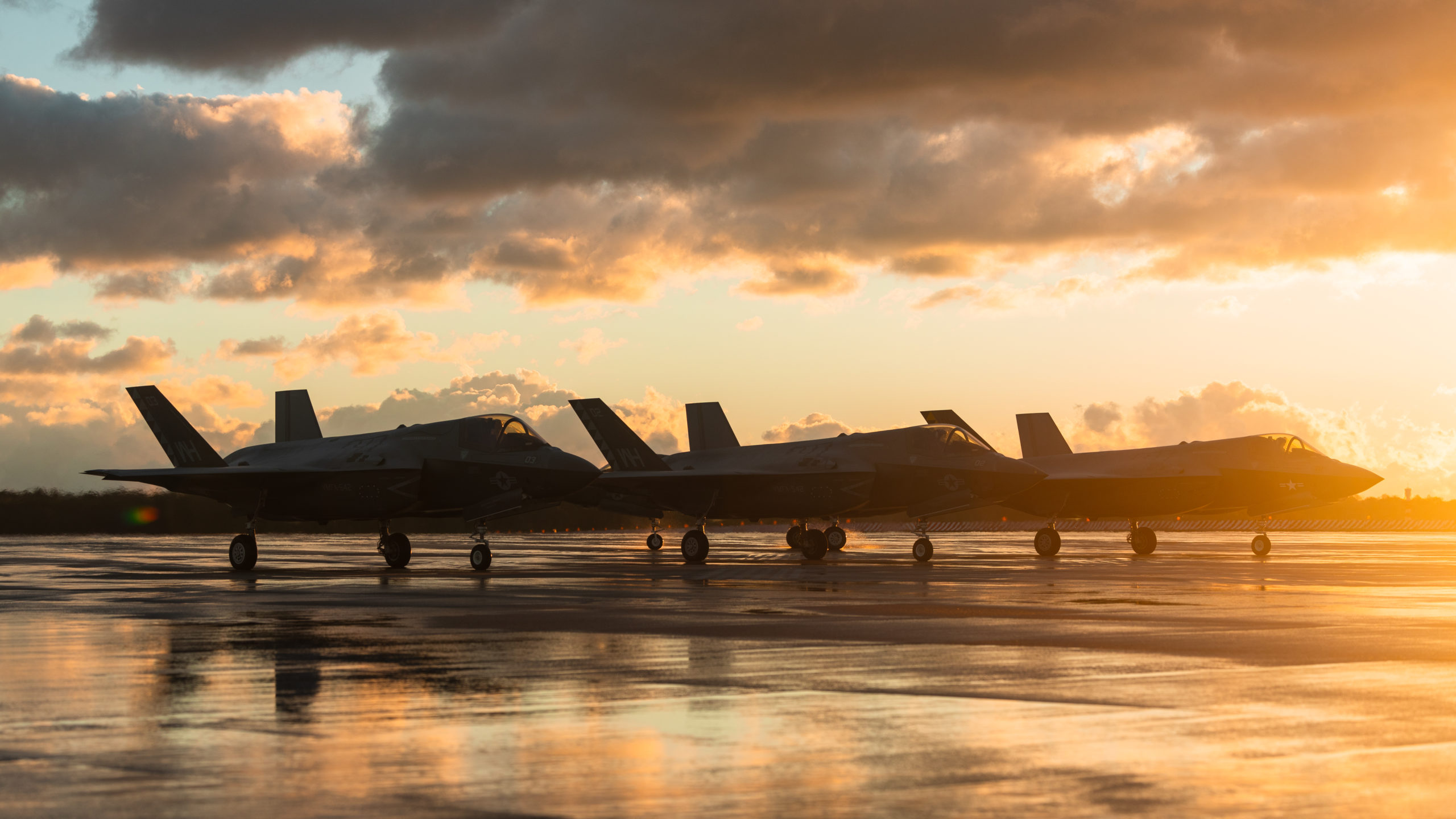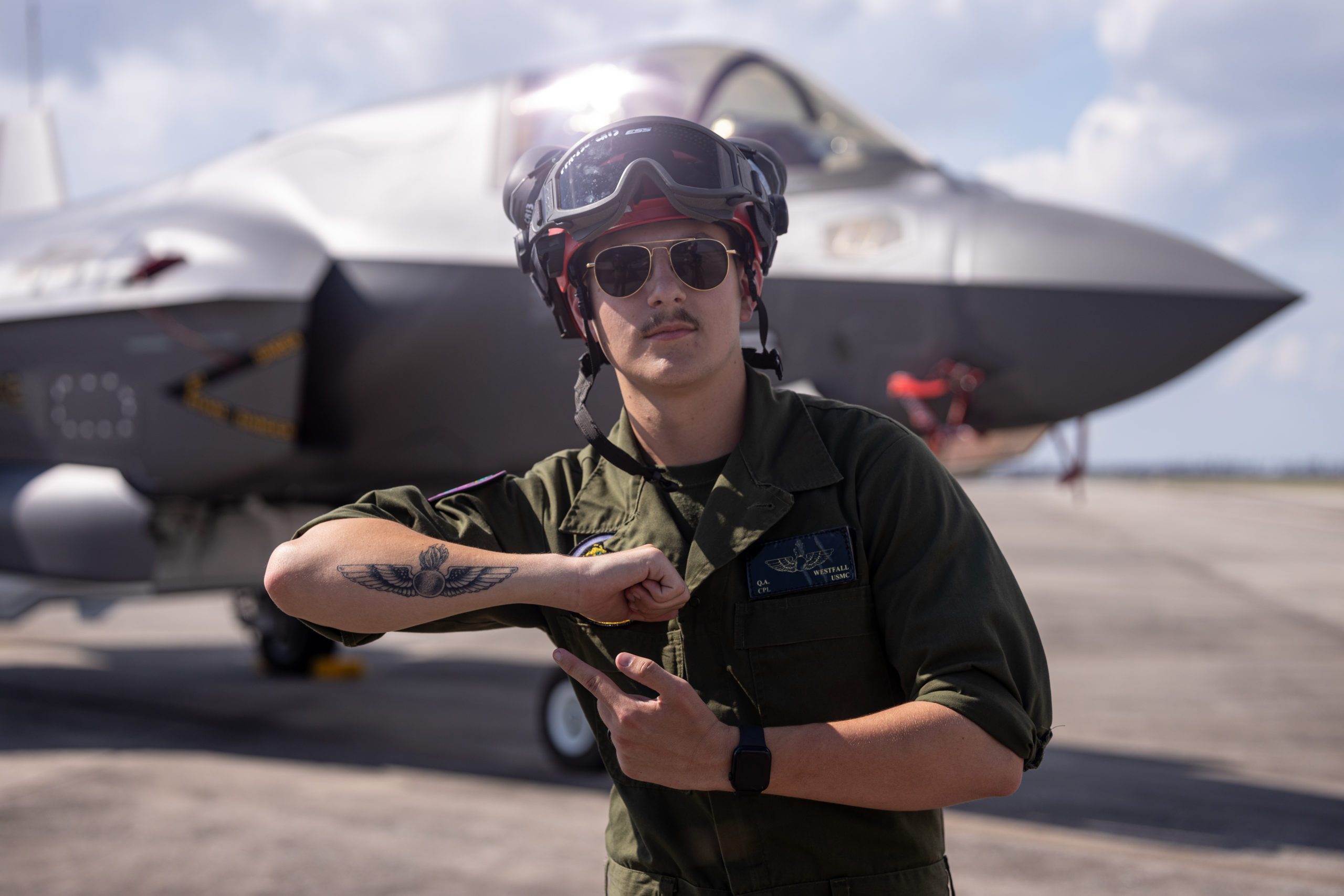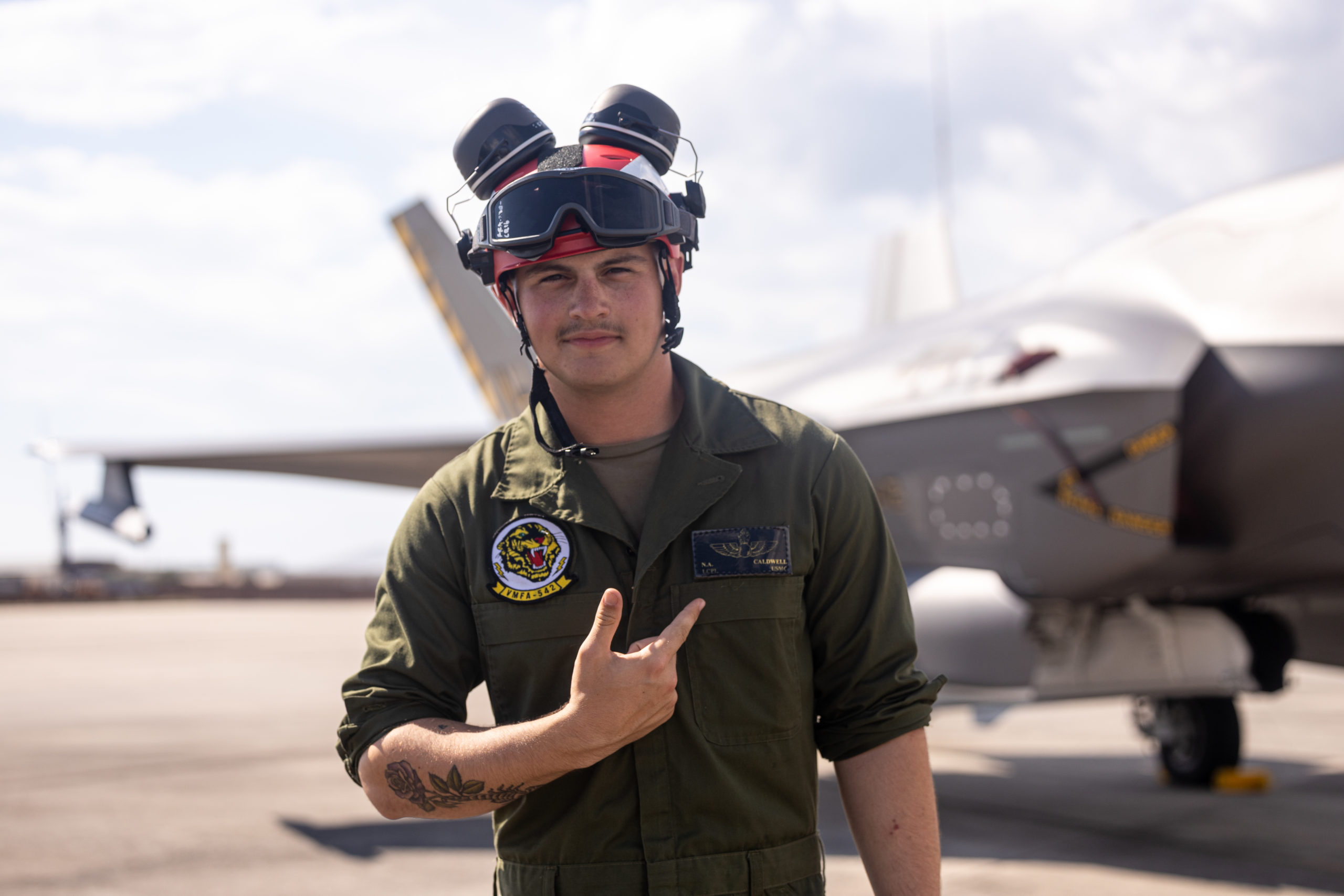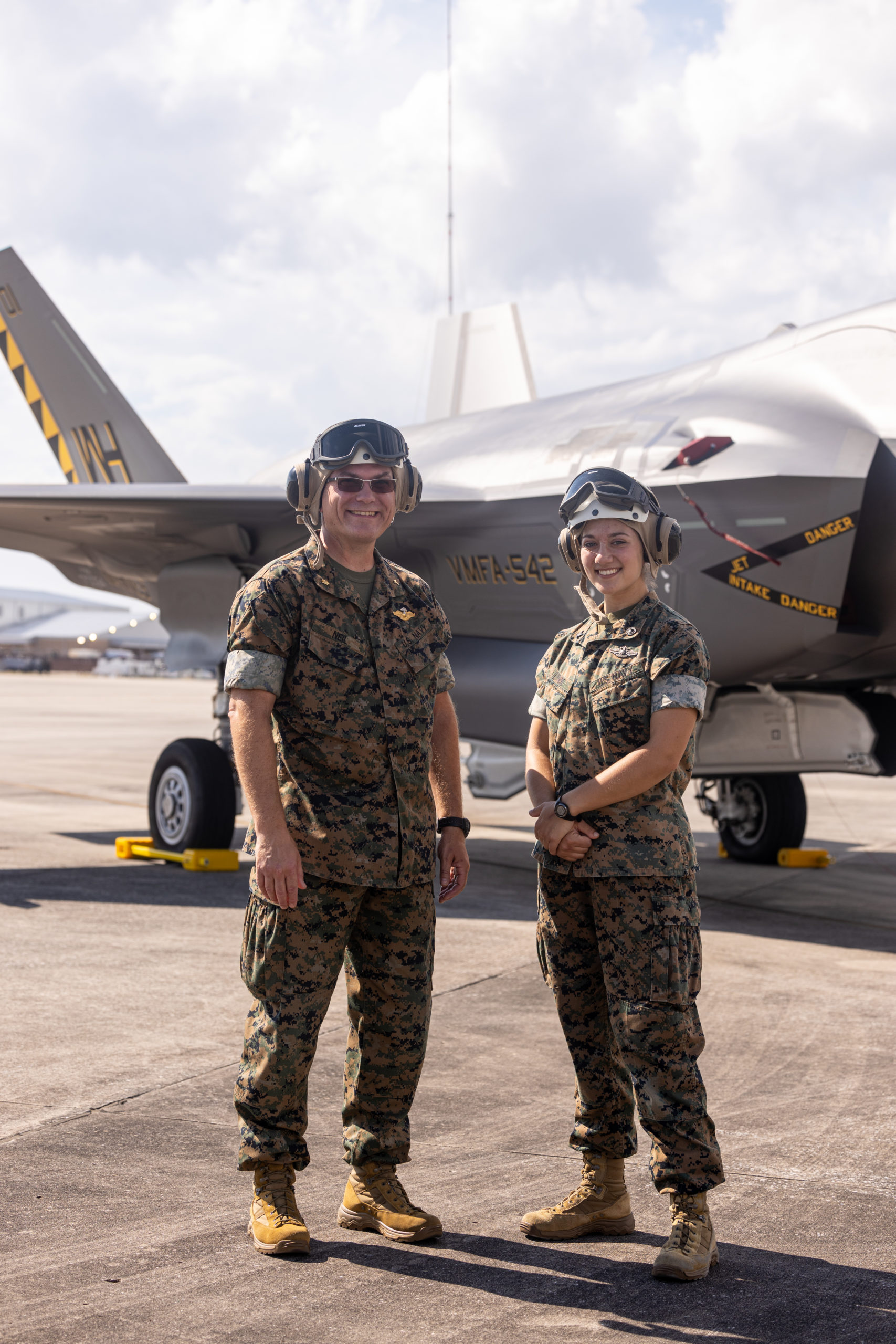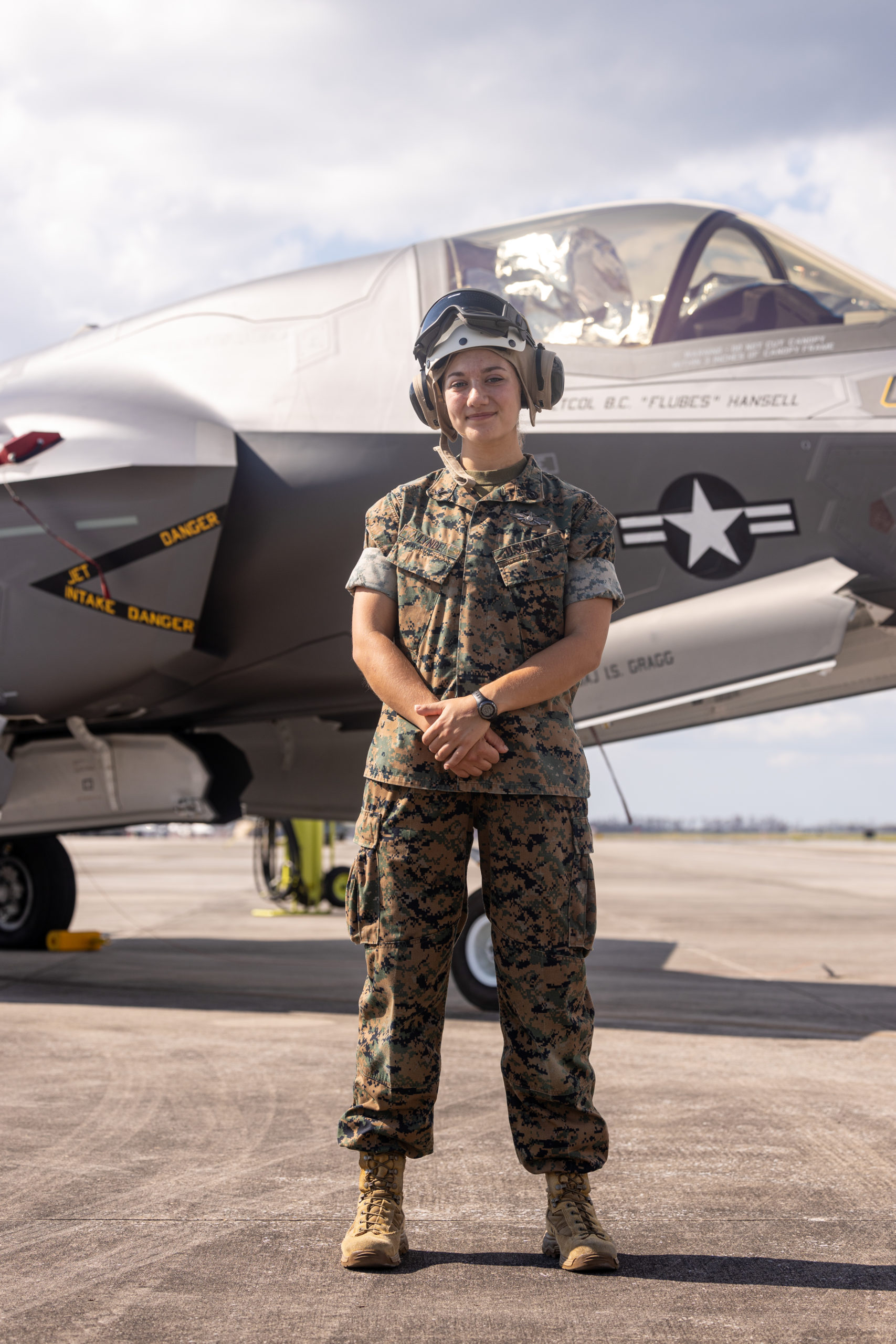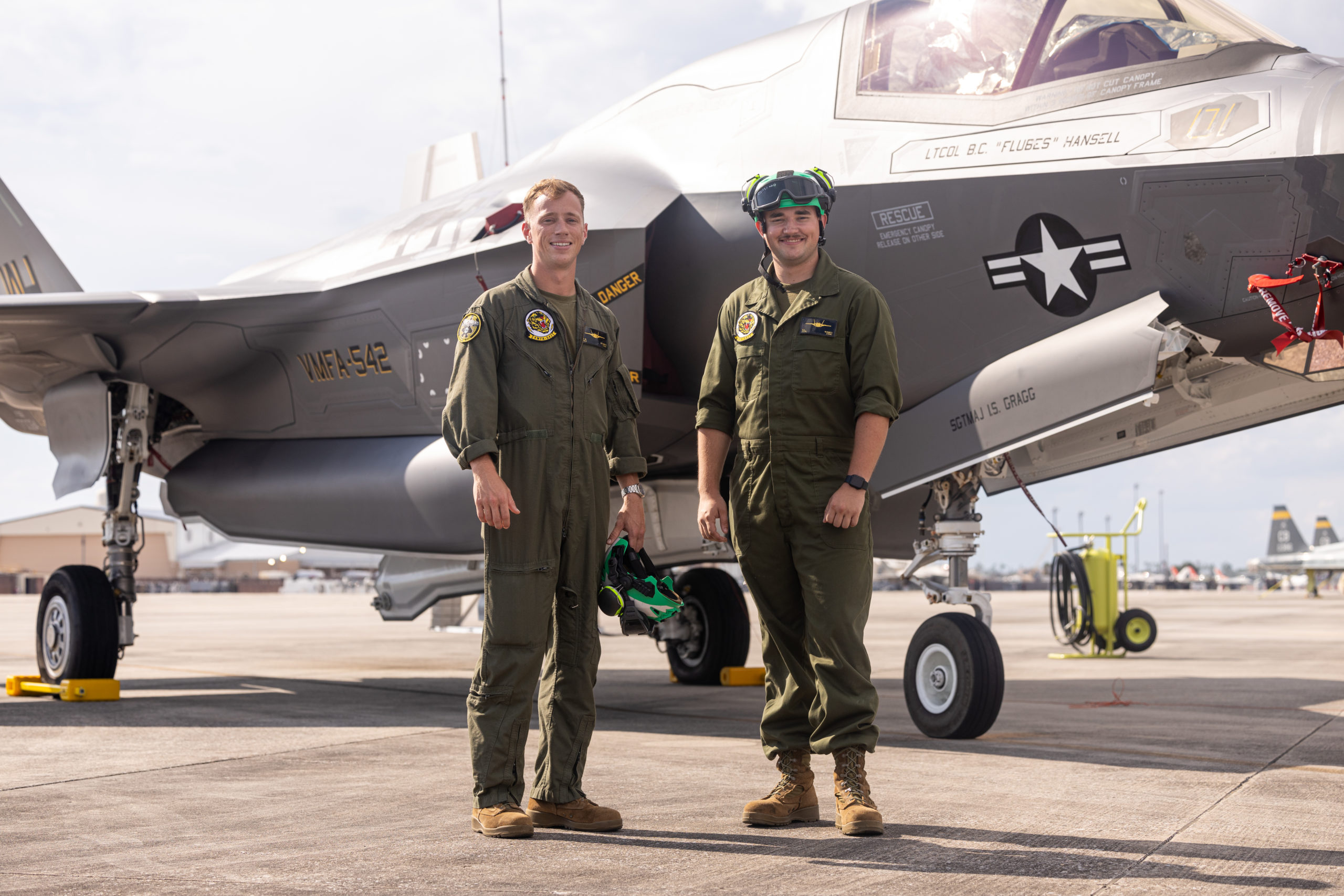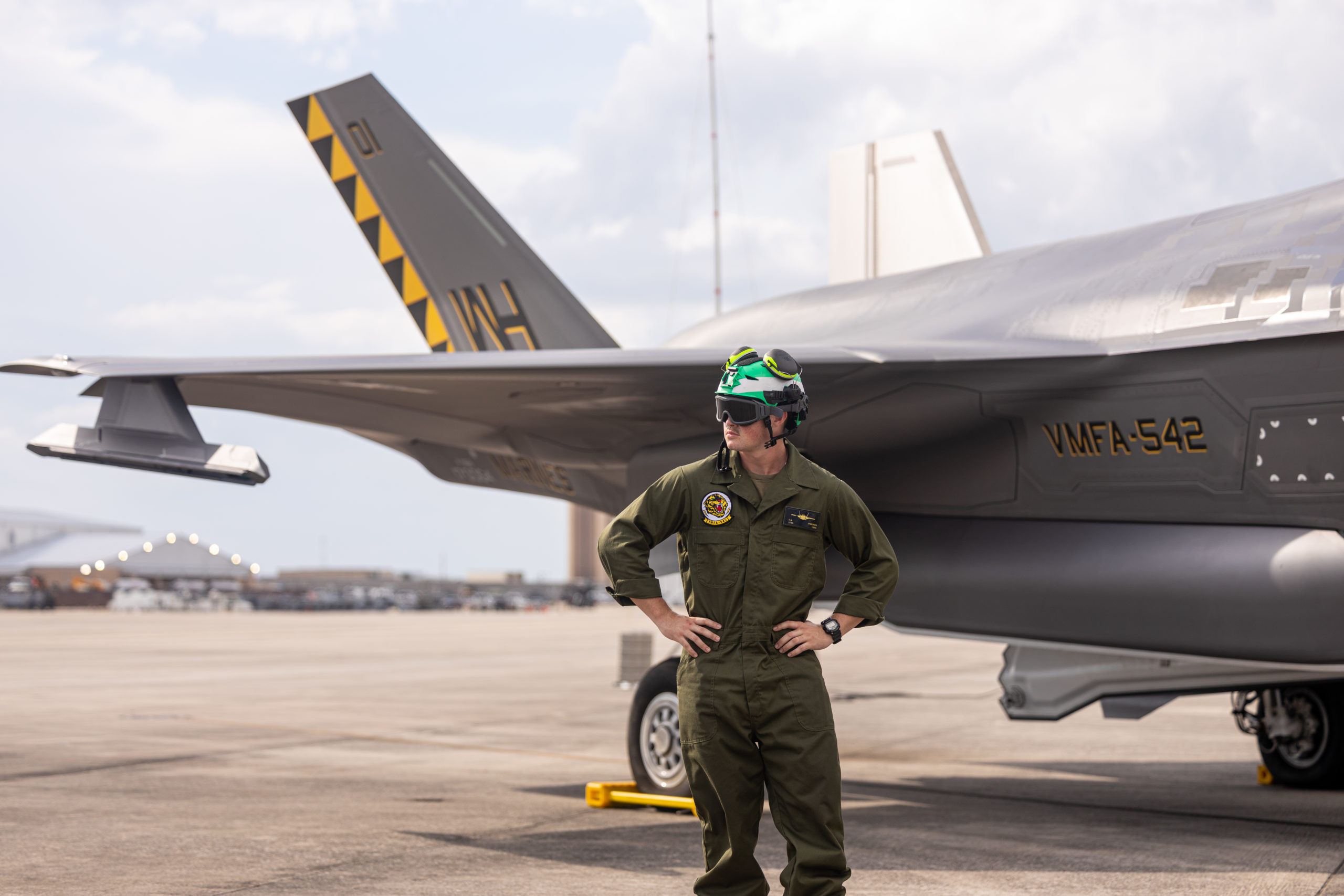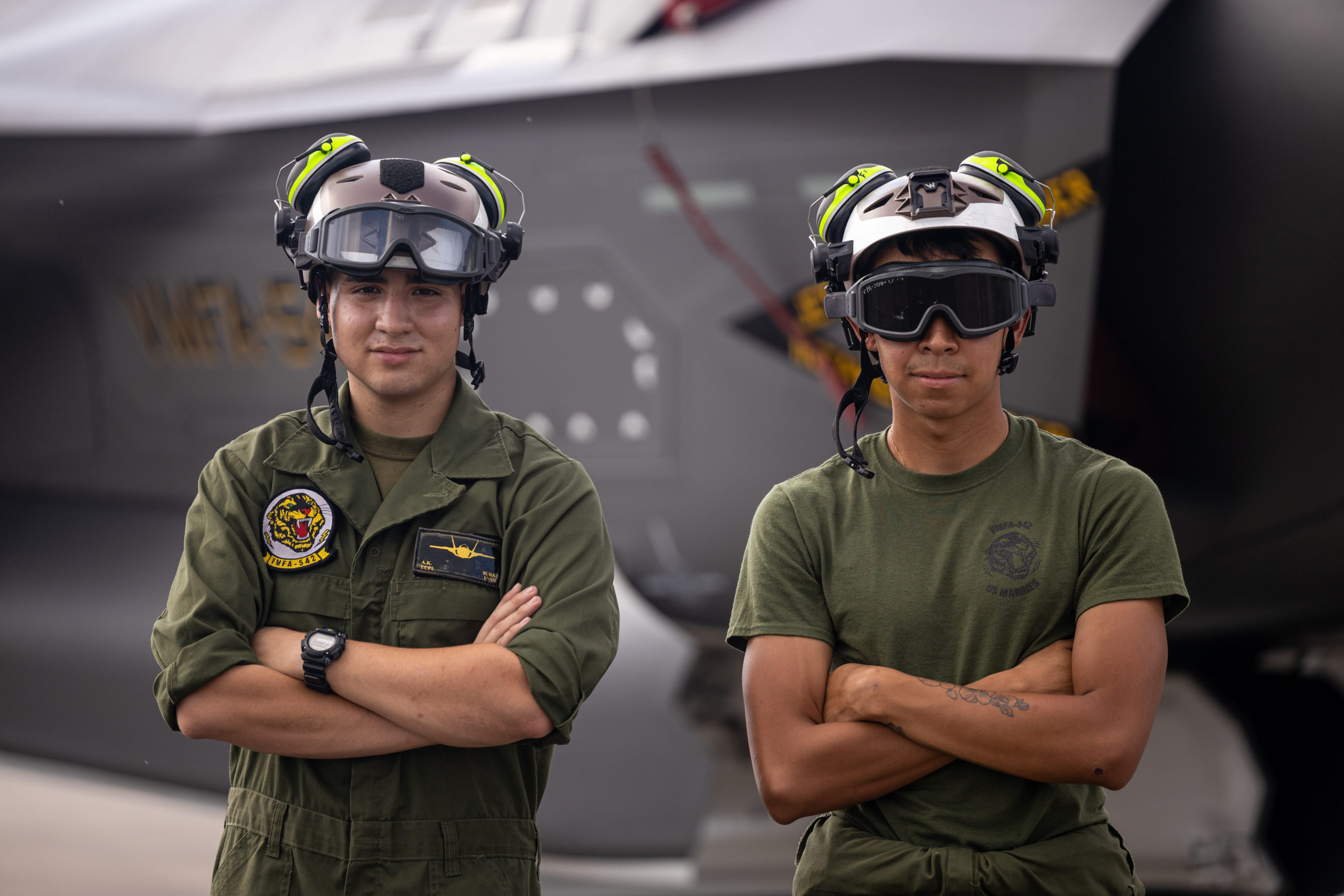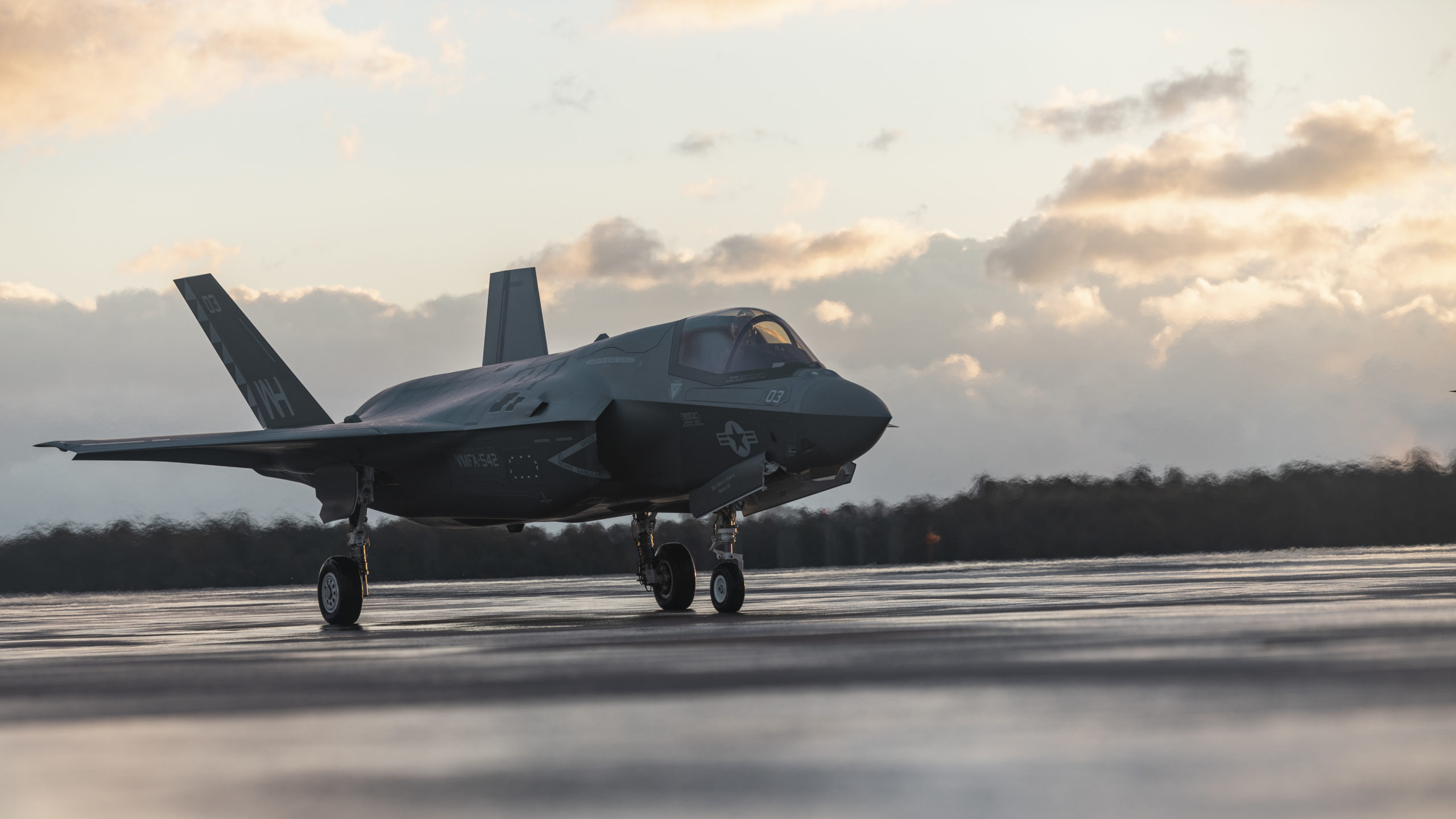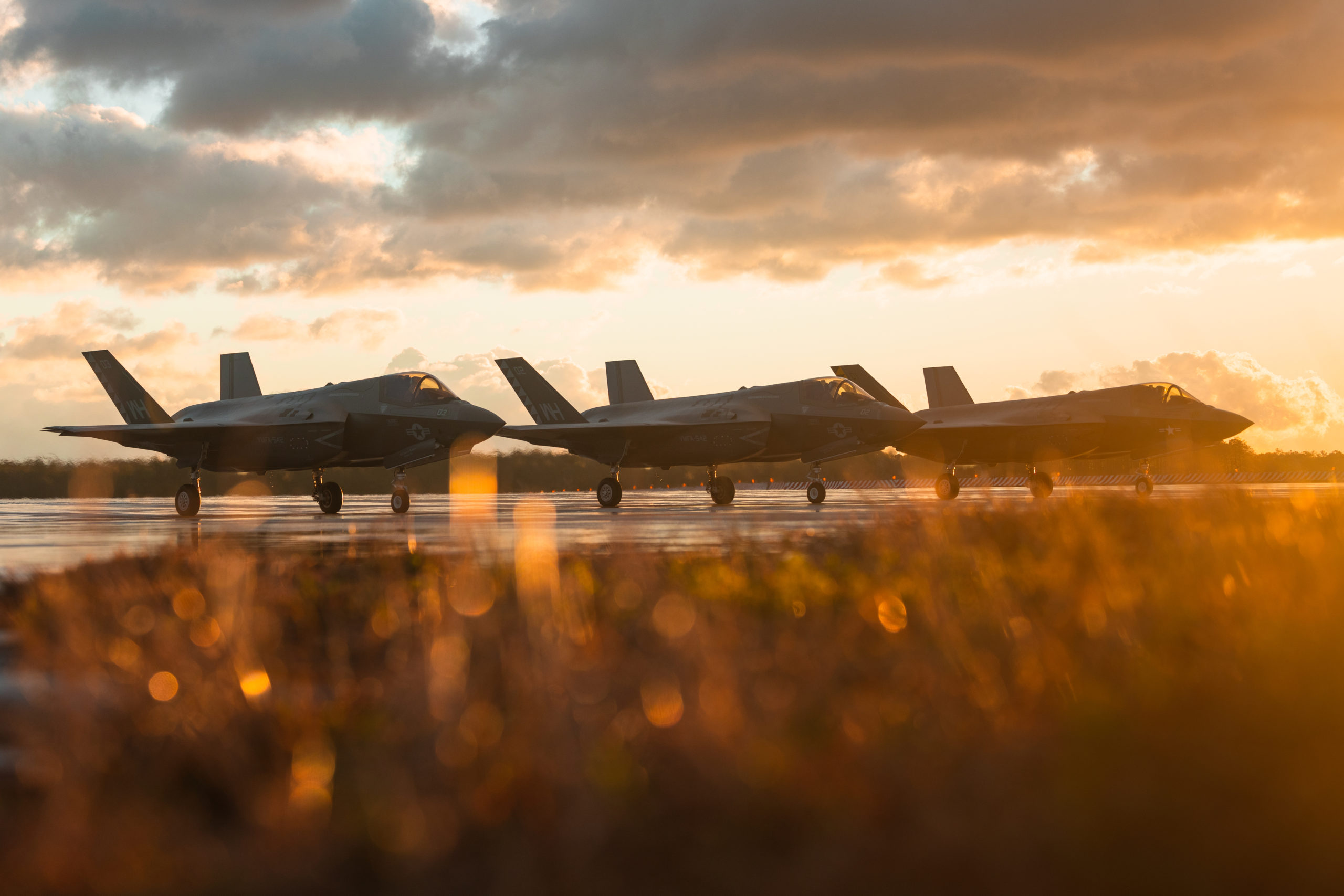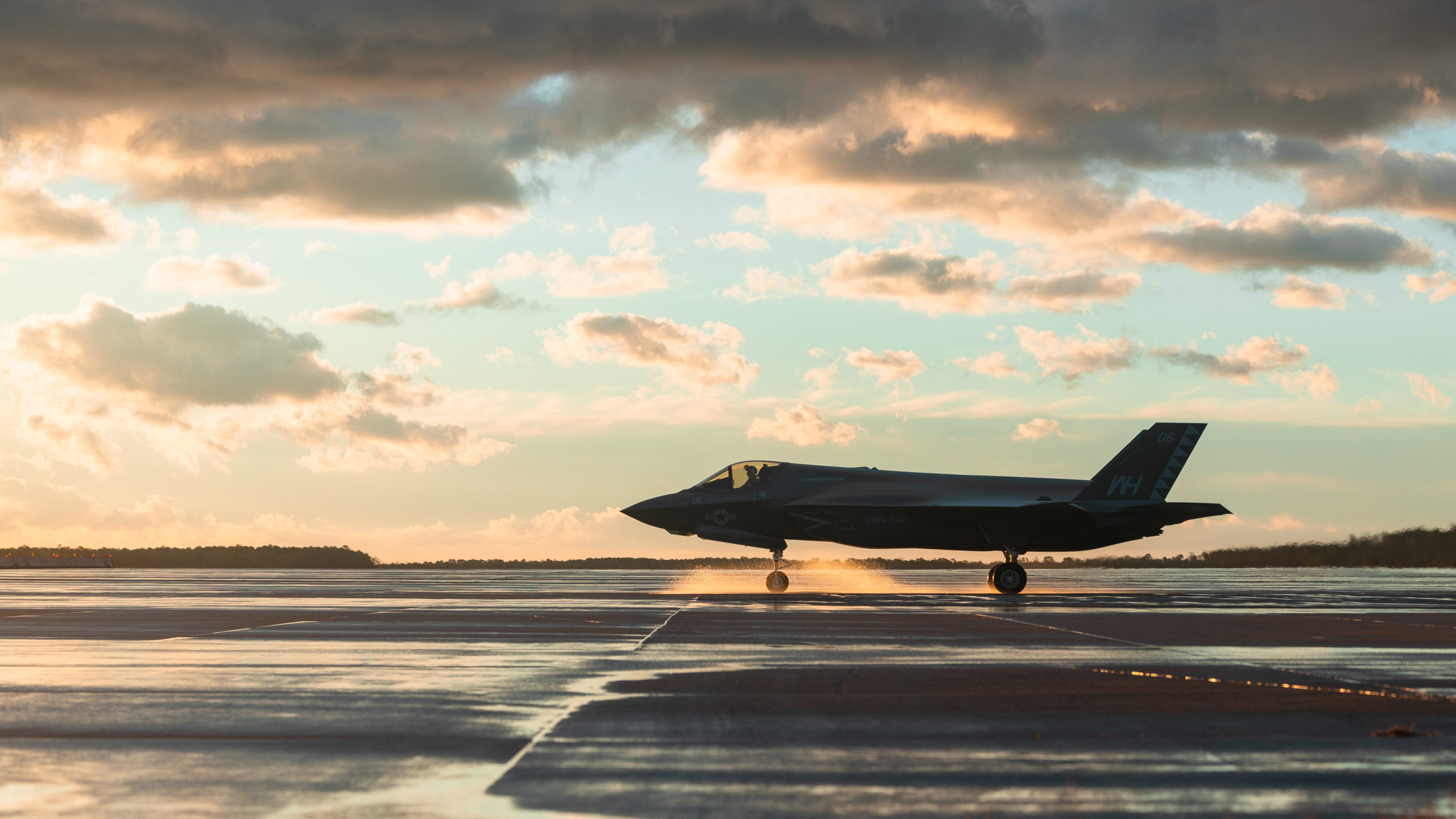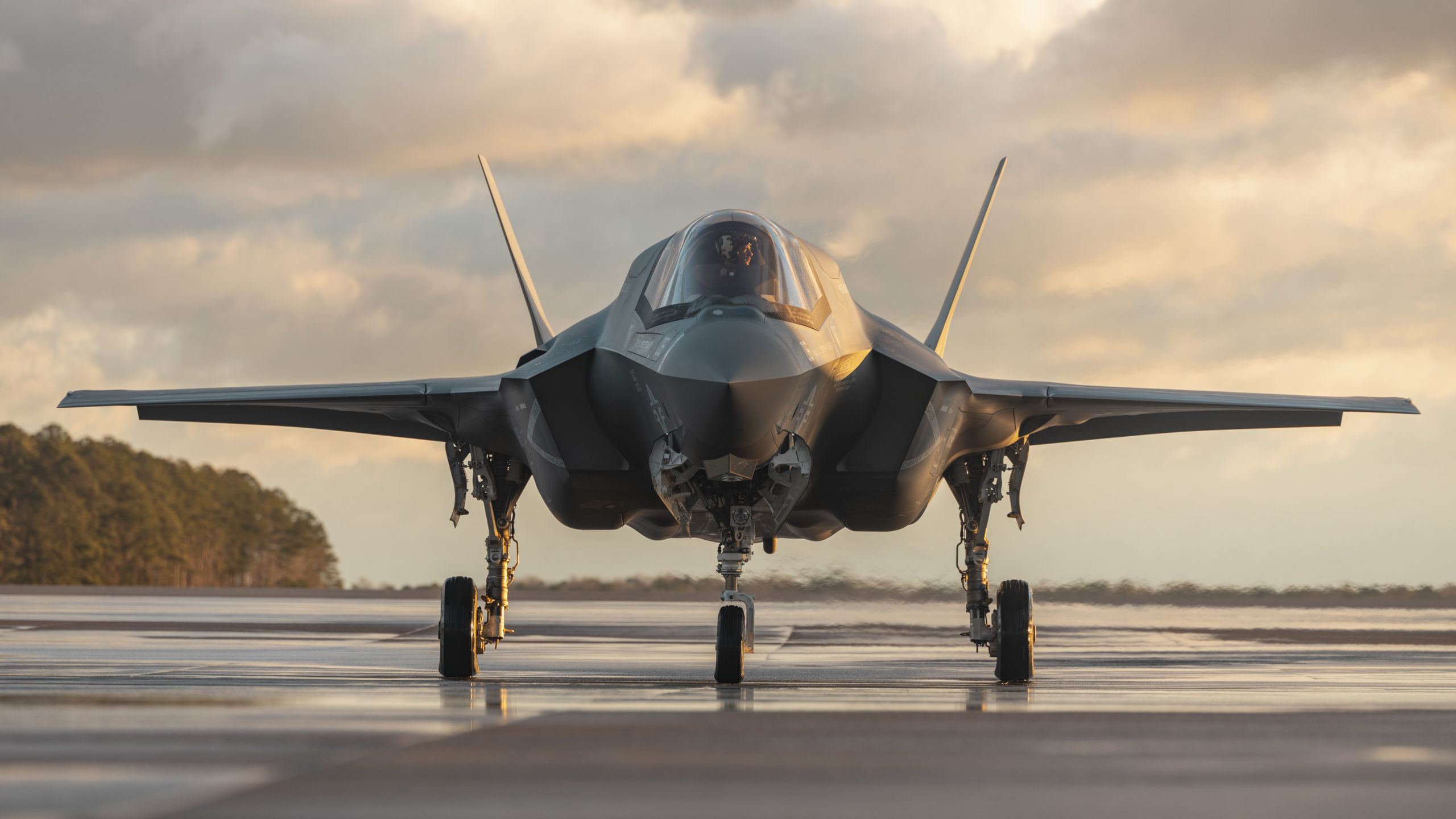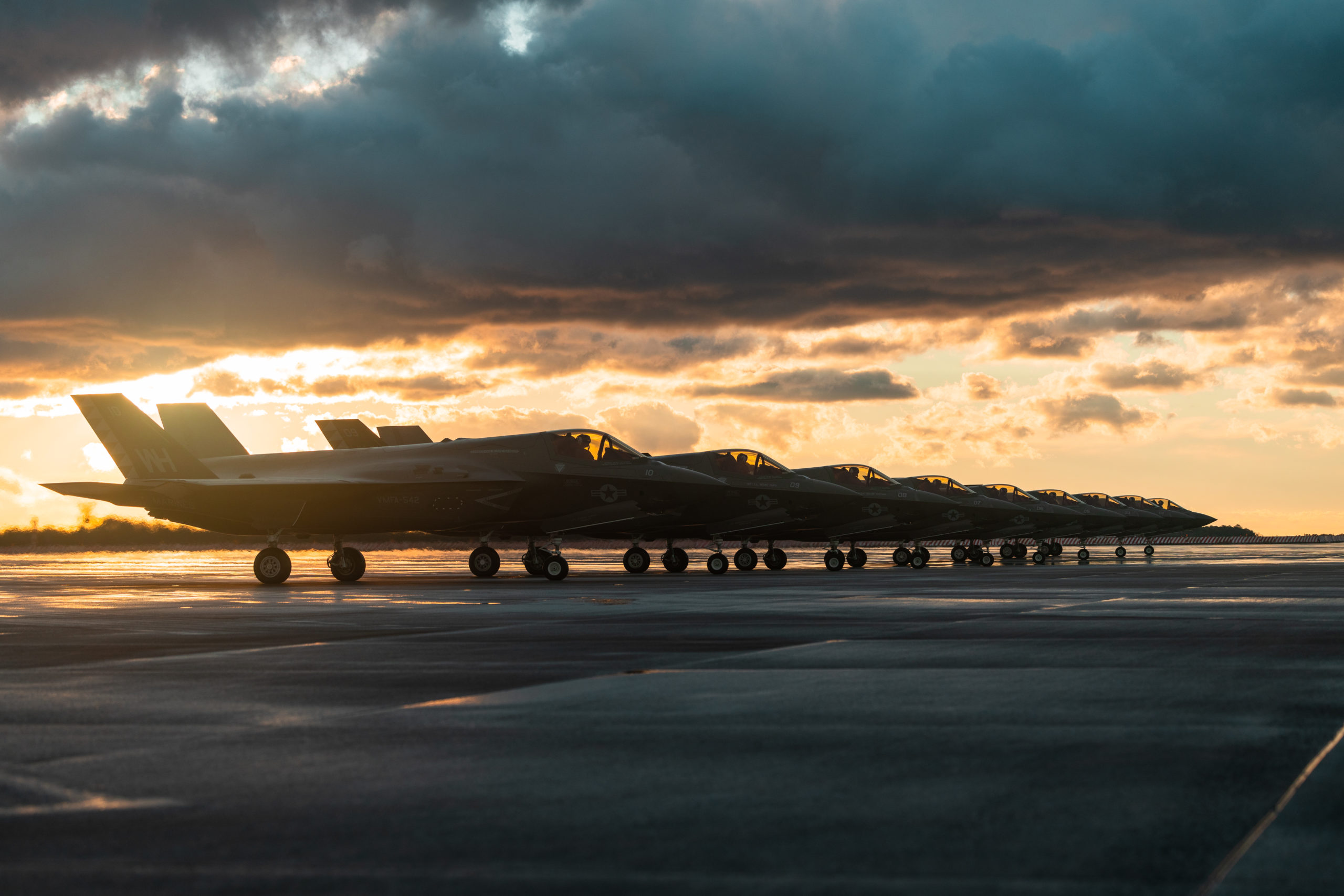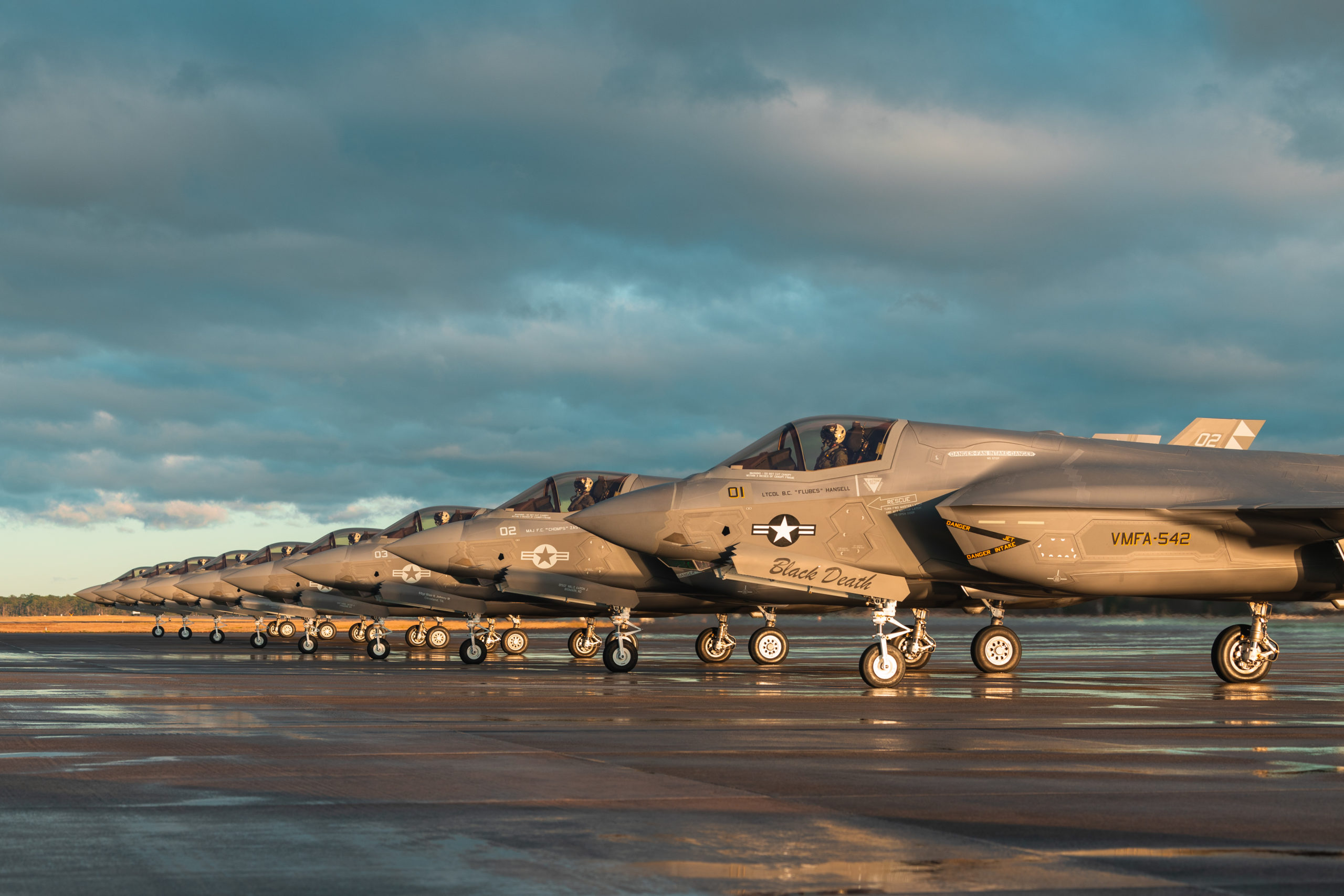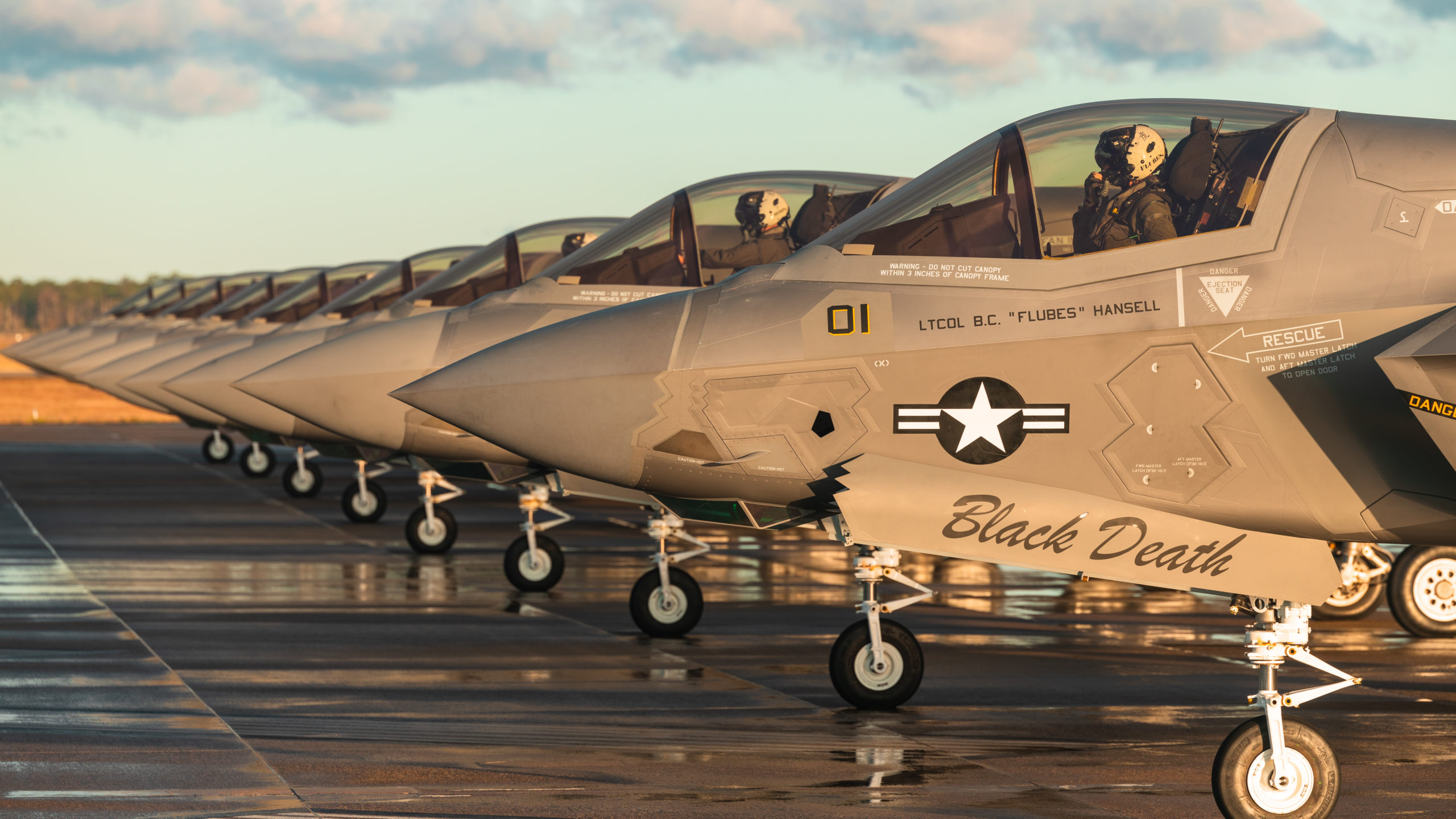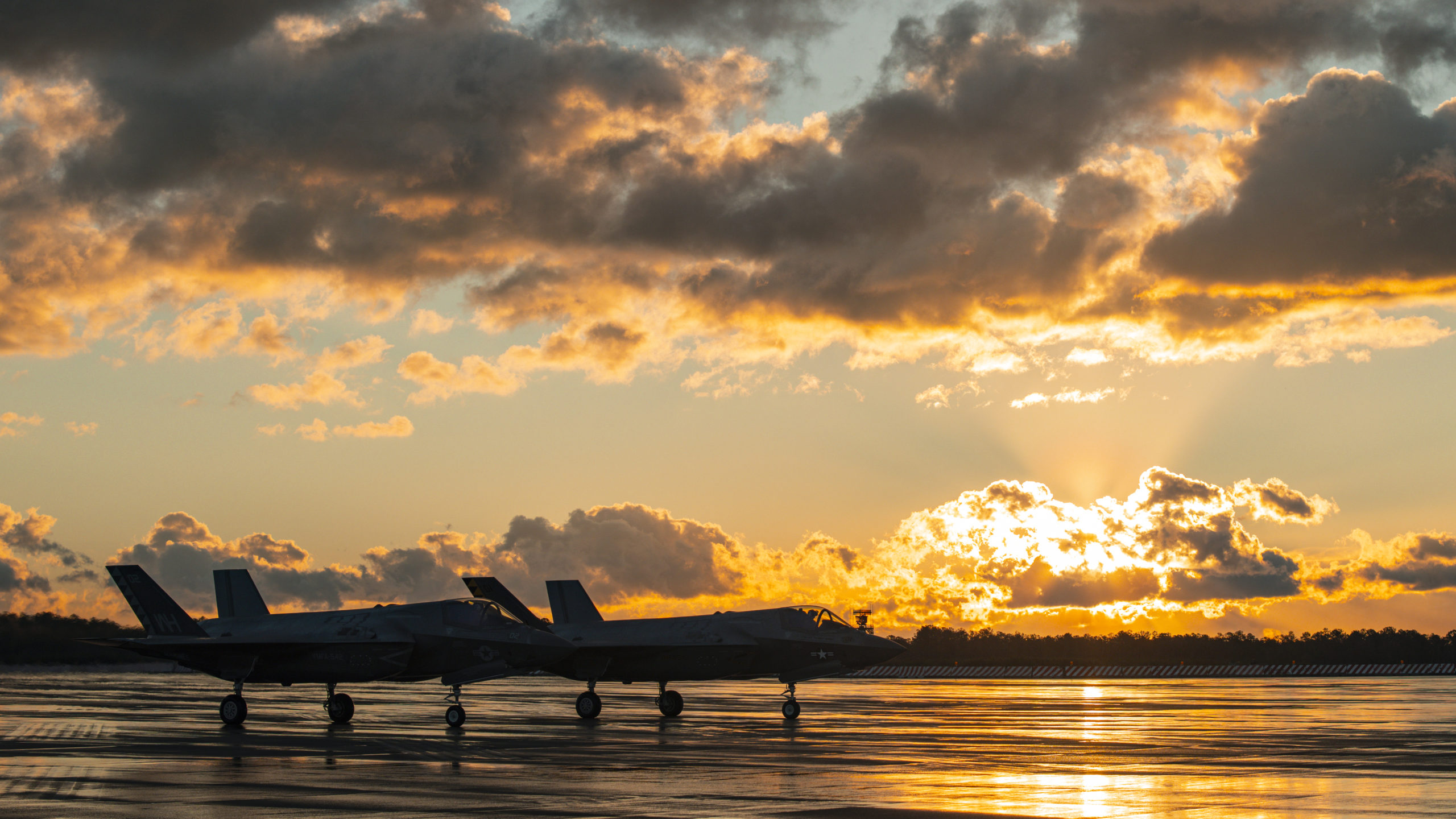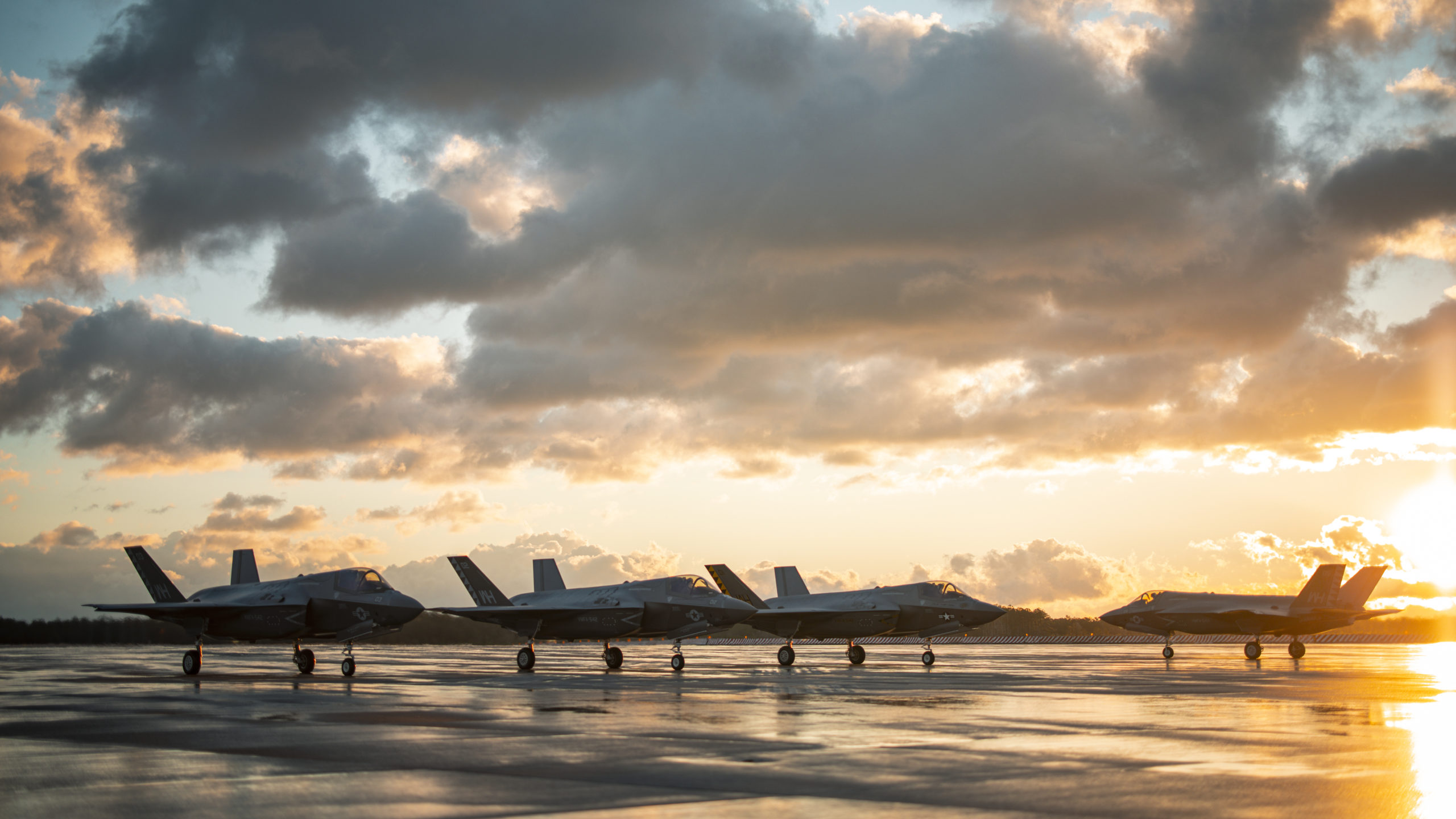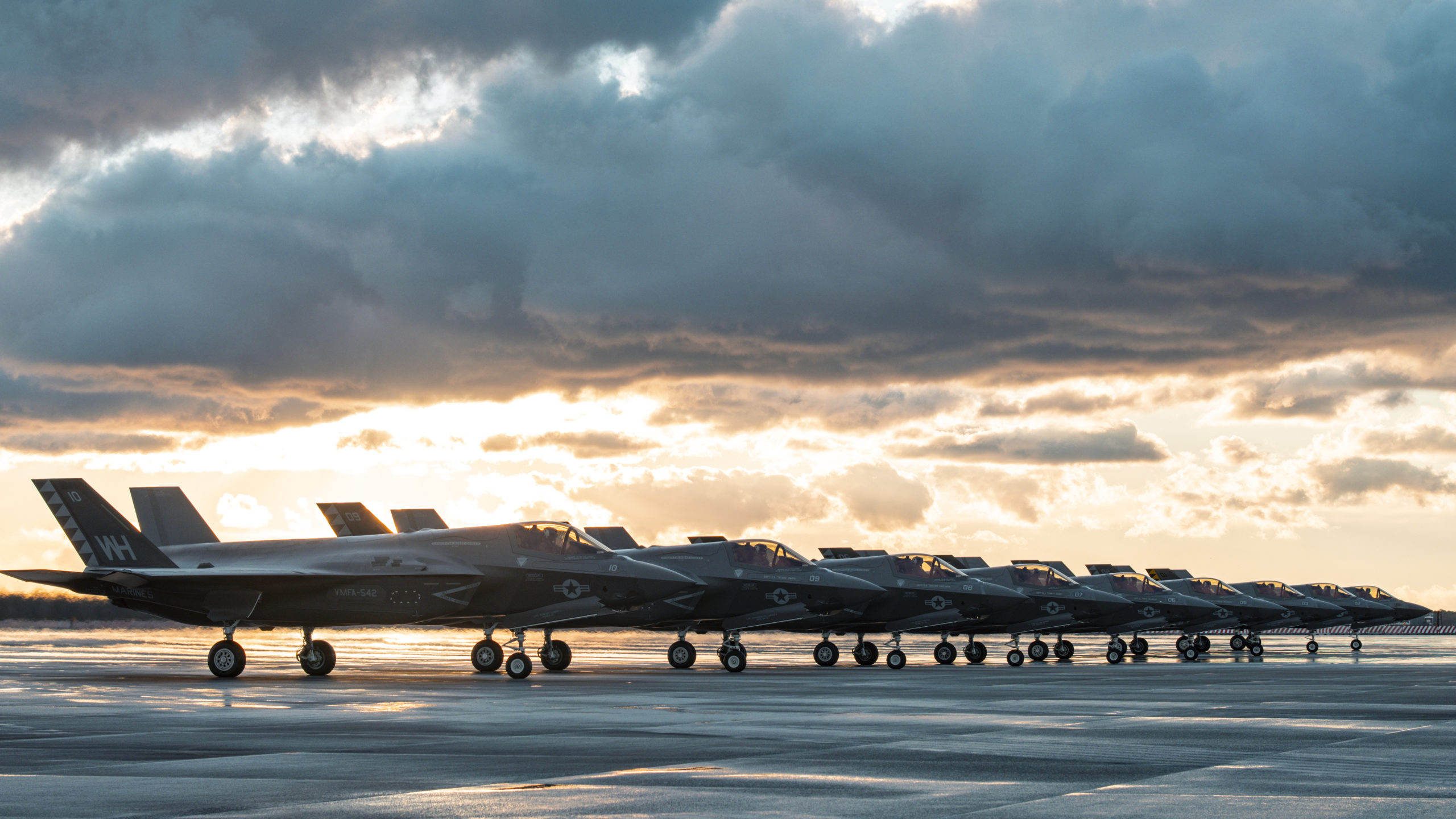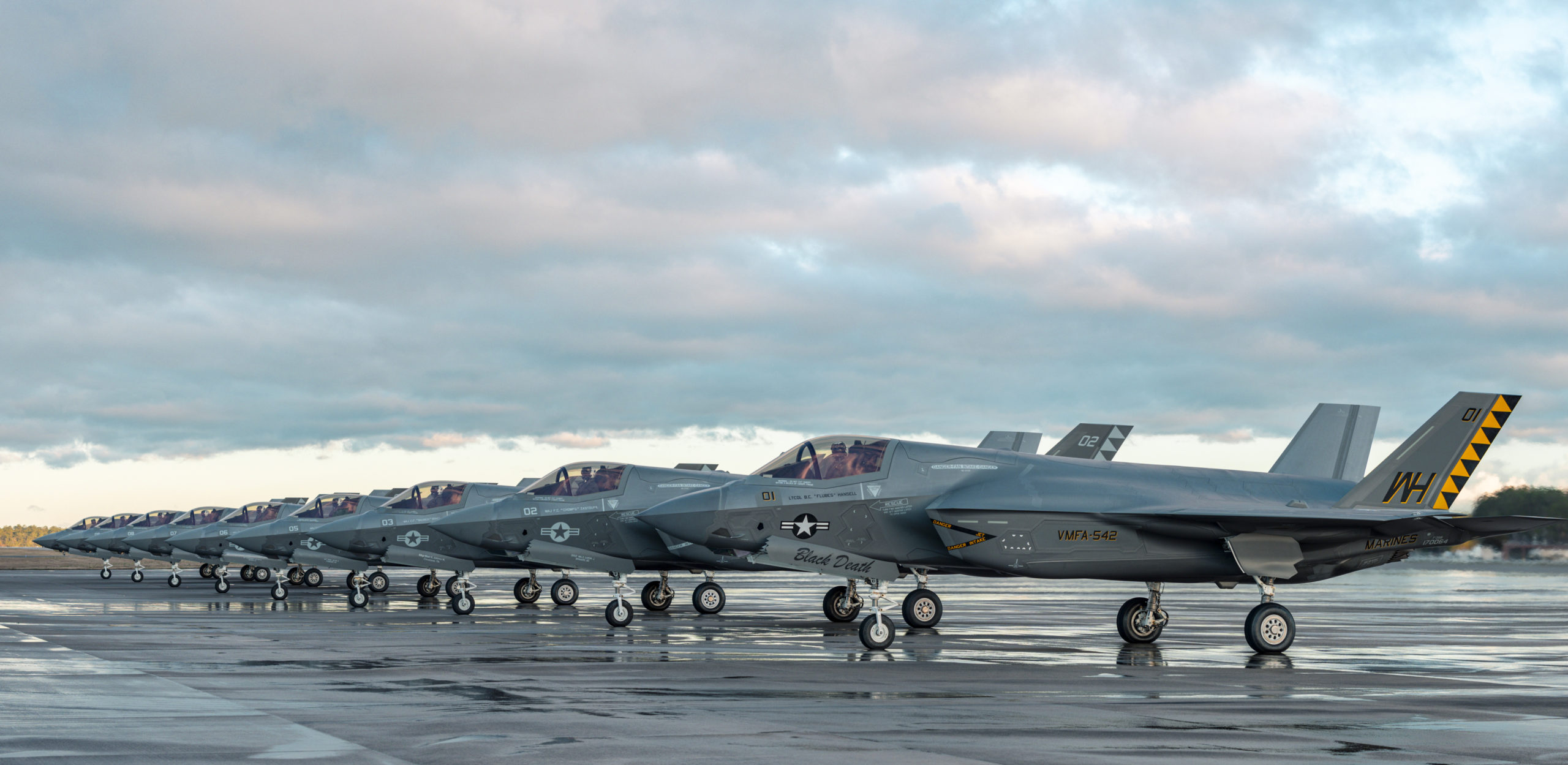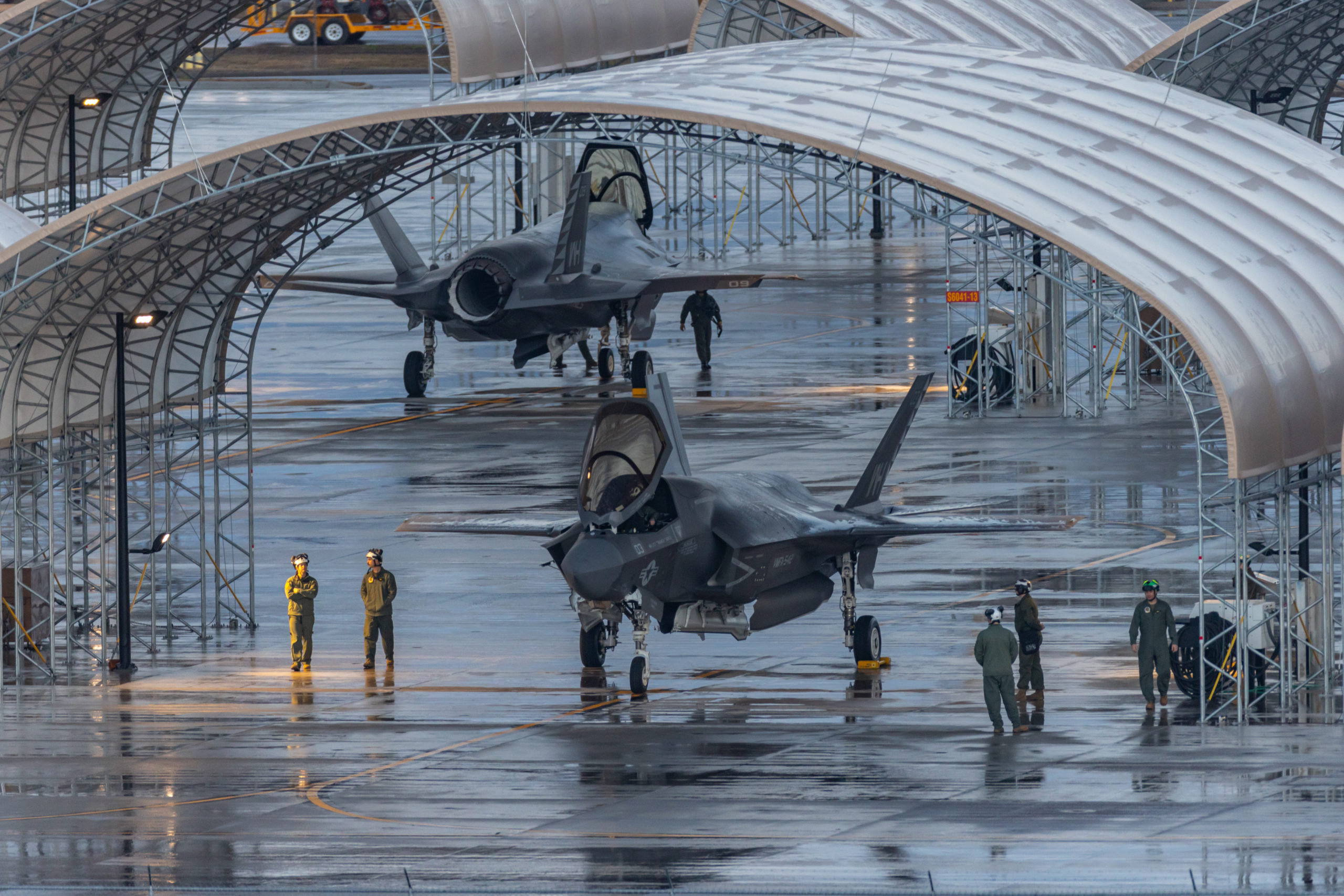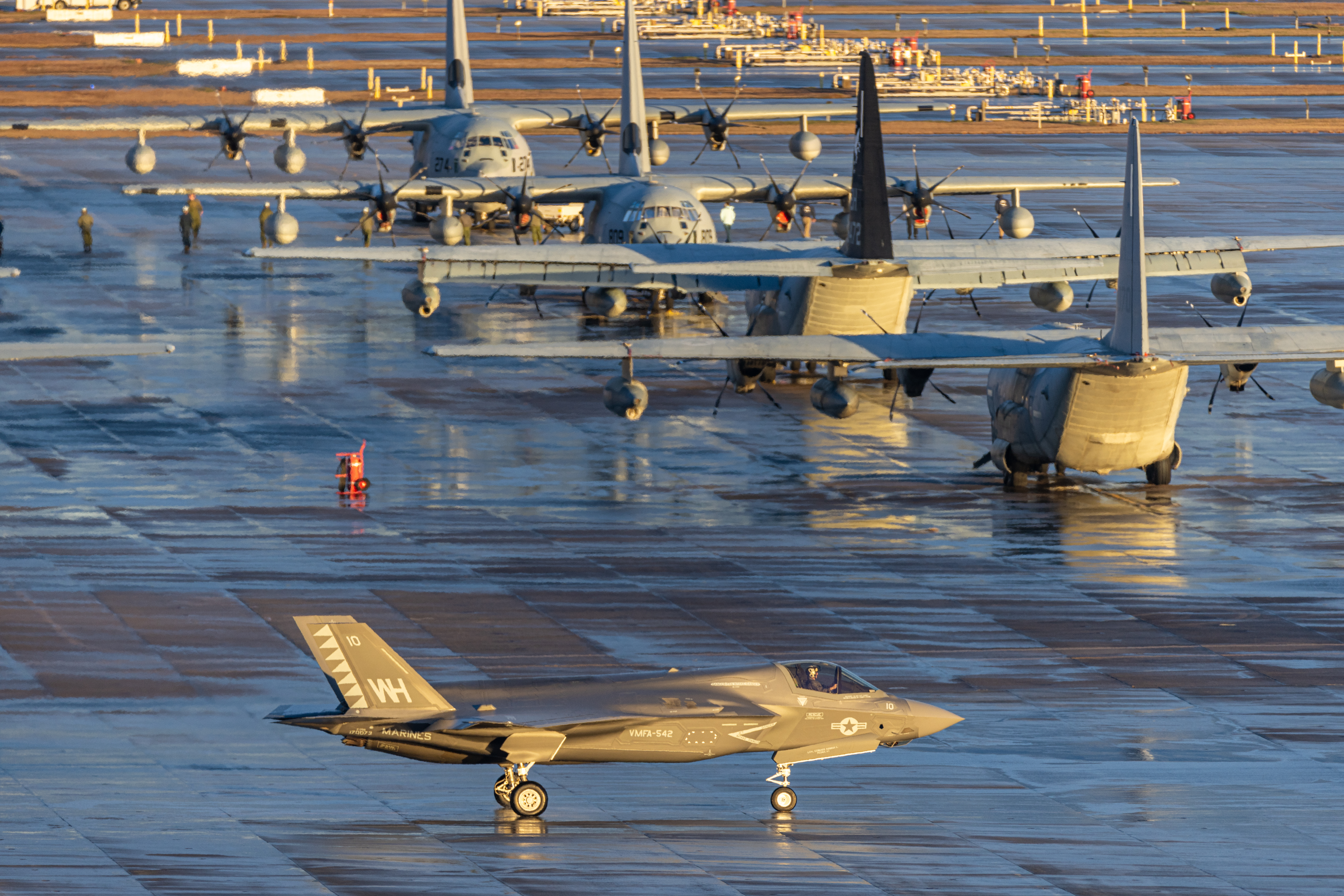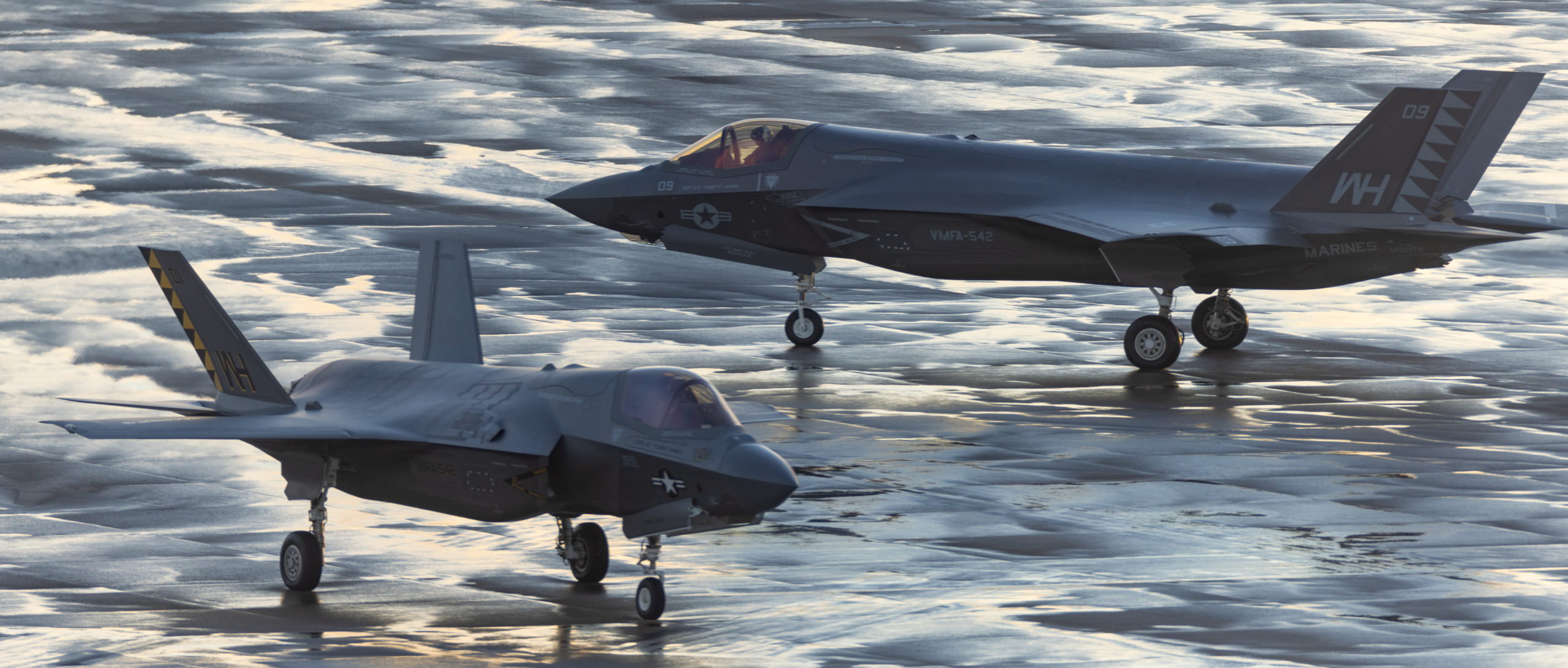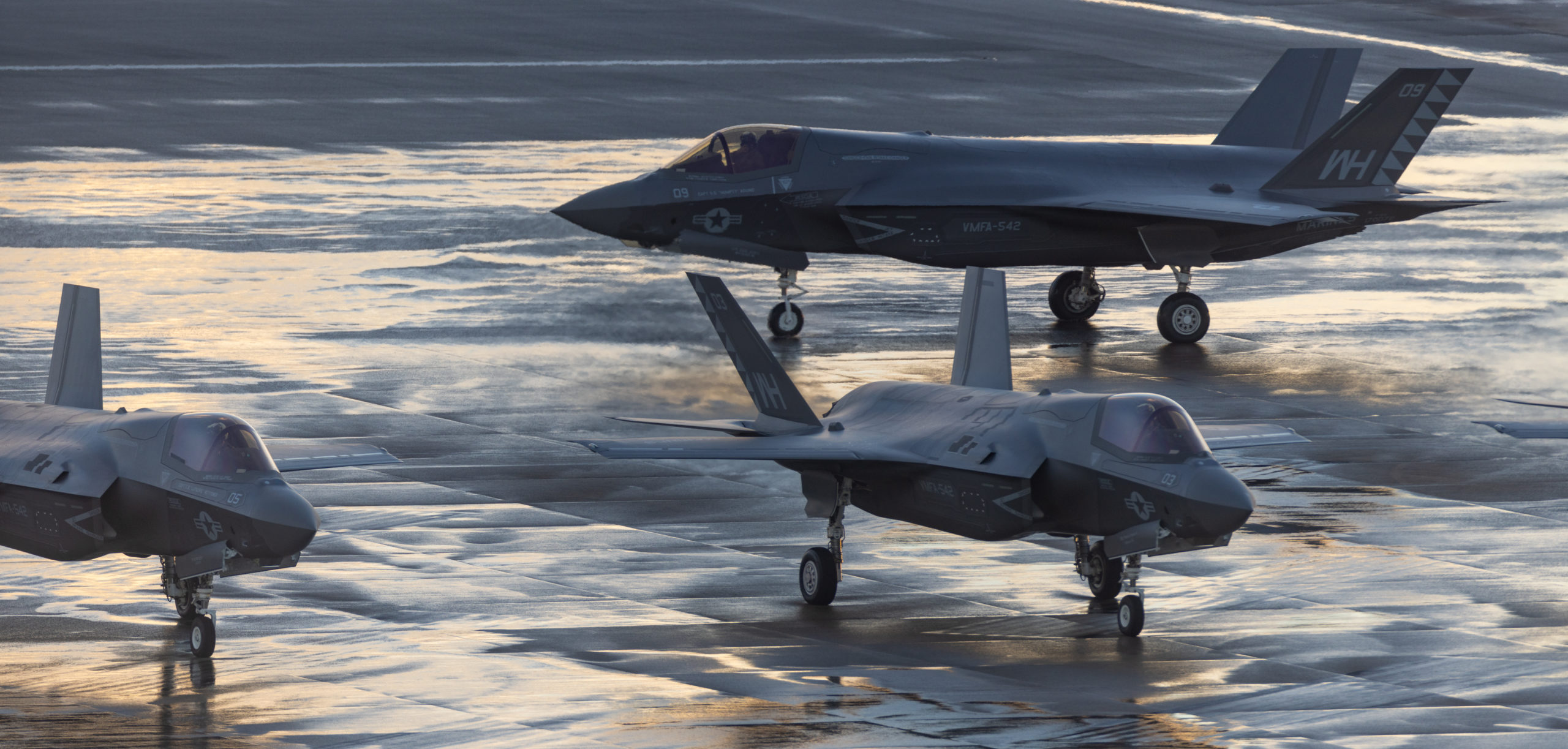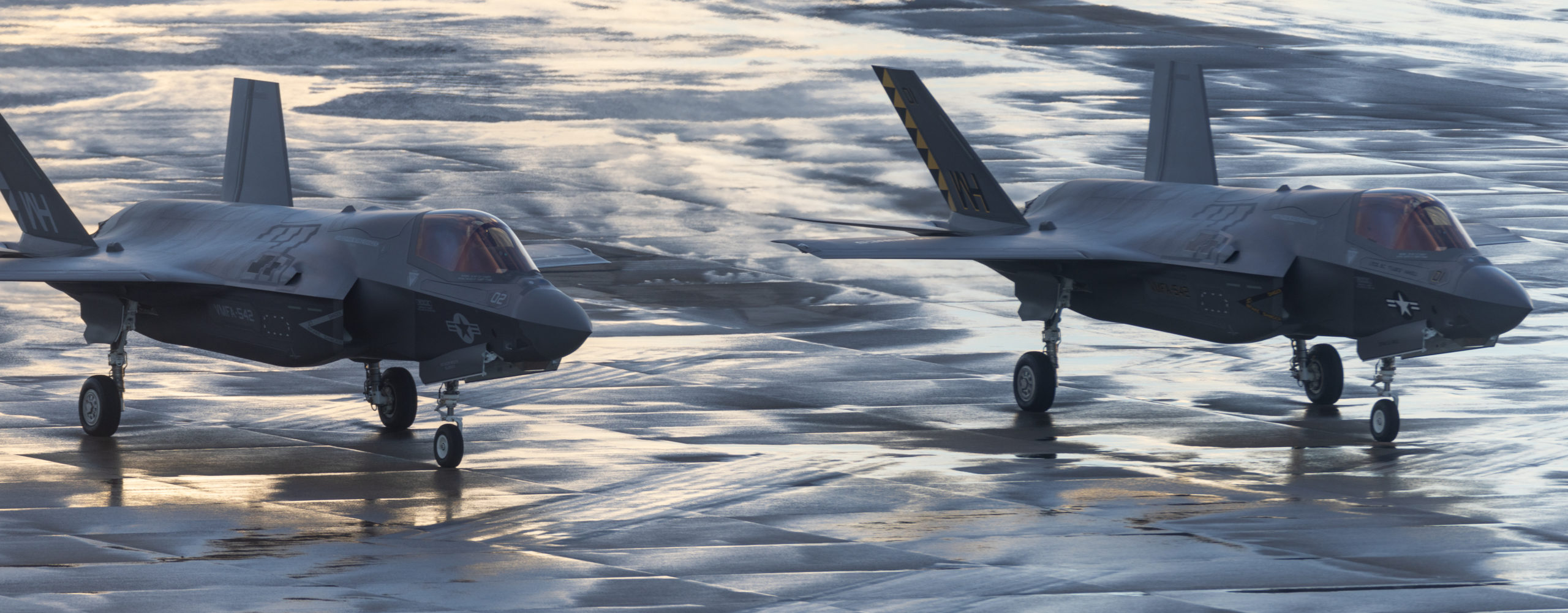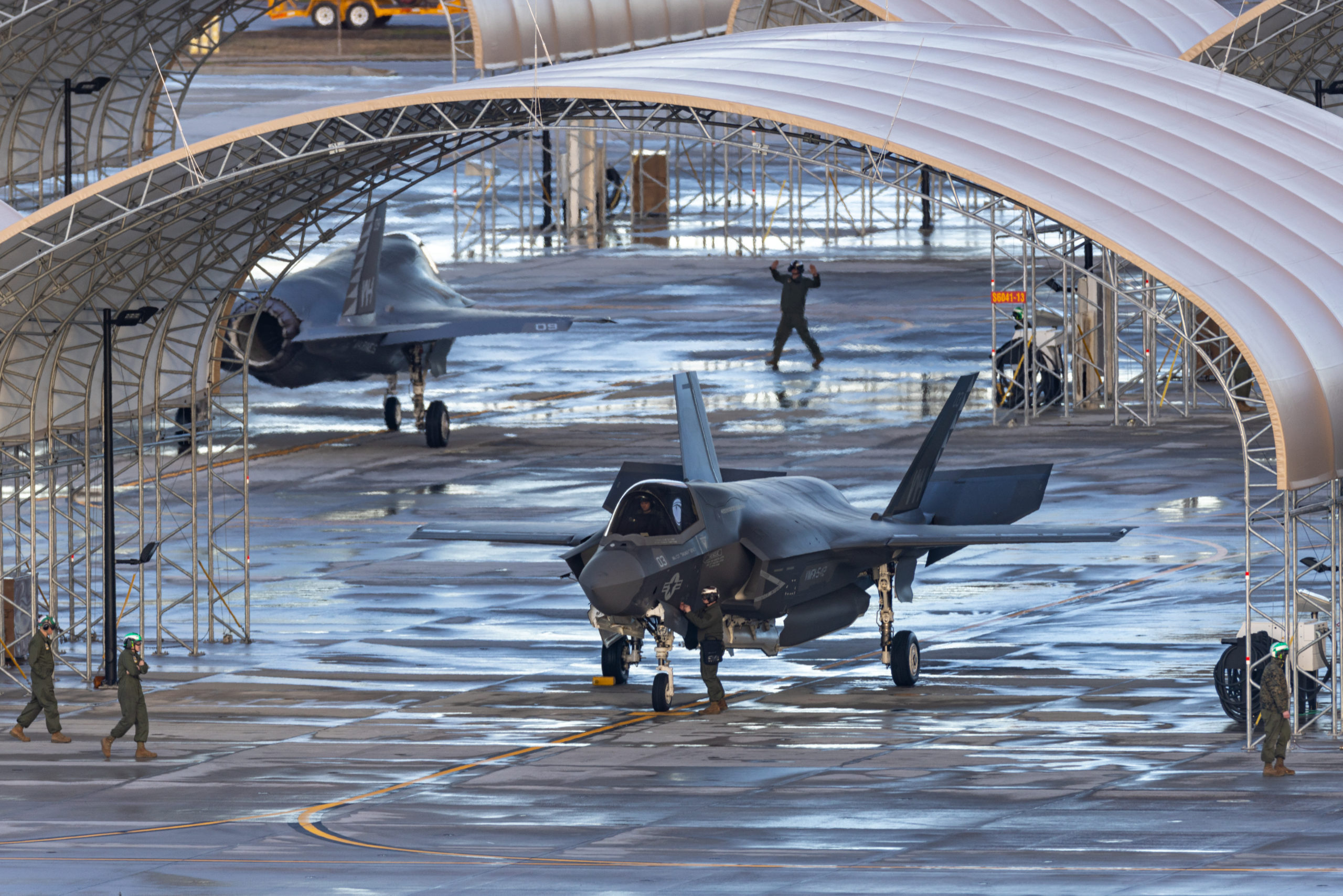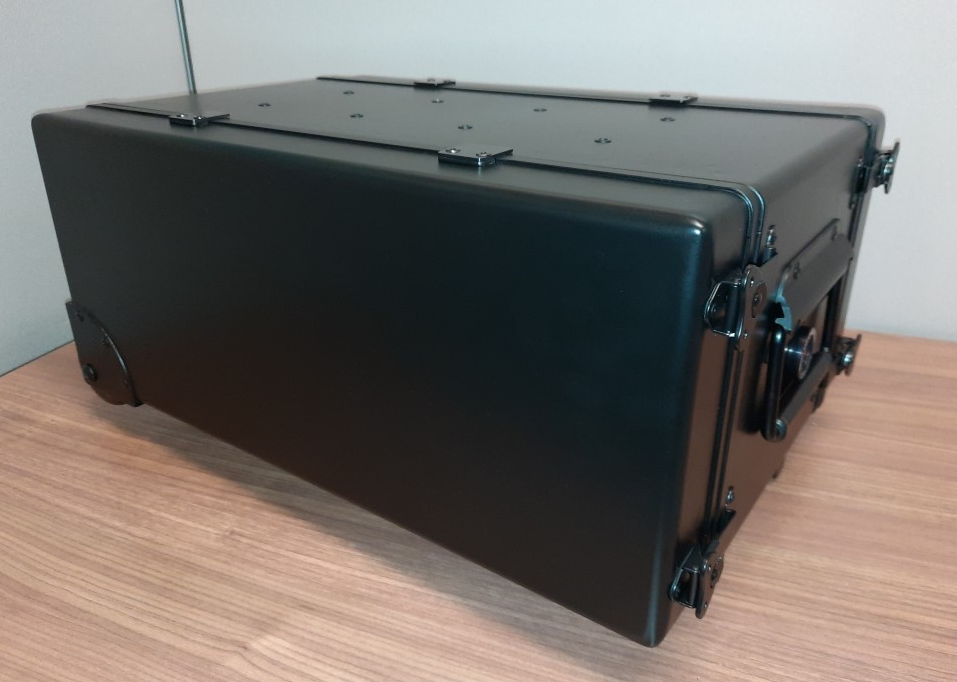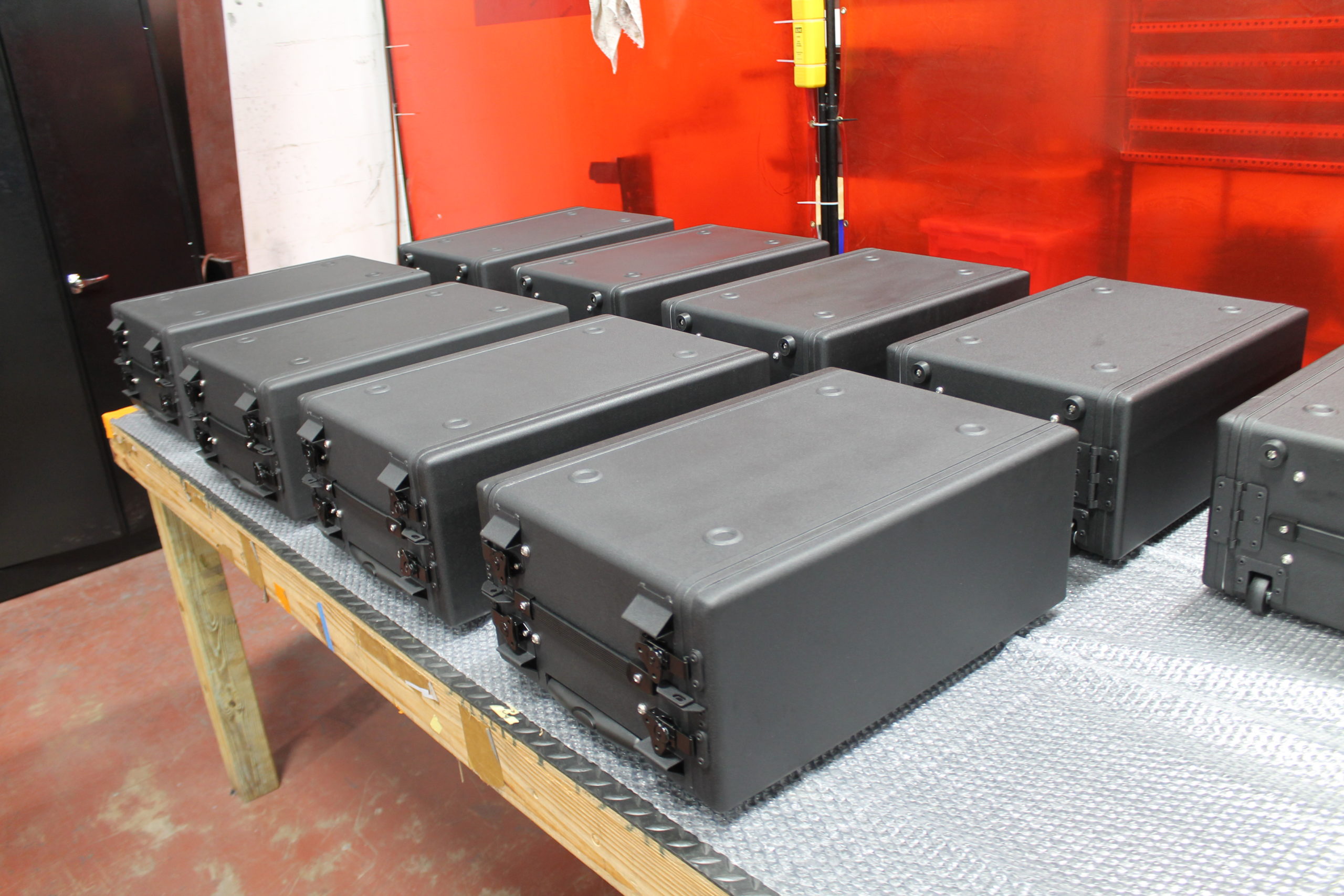By Robbin Laird
The F-35 has finally come to Cherry Point.
VMFA-542 is the first of eight operational 2nd MAW F-35 squadrons, with six to be F-35B squadrons and two to be F-35C squadrons.
As 2nd Lt. John Graham, 2nd Marine Aircraft Wing, wrote in an article published on February 8, 2024:
Marine Fighter Attack Squadron (VMFA) 542, 2nd Marine Aircraft Wing (MAW), became the first East Coast F-35B Lightning II Joint Strike Fighter squadron in the Fleet Marine Force to achieve initial operational capability, Feb. 5.
Initial operational capability means that VMFA-542 has enough operational F-35B Lightning II aircraft, trained pilots, maintainers, and support equipment to self-sustain its mission essential tasks (METs). These METs include conducting close-air support, offensive anti-air warfare, strike coordination and reconnaissance, and electronic attacks.
“VMFA-542 is the first operational fifth-generation squadron in II Marine Expeditionary Force, giving the aviation combat element the most lethal, survivable, and interoperable strike fighter in the U.S. inventory,” said Lt. Col. Brian Hansell, commanding officer of VMFA-542. “The F-35B is unmatched in its capability to support Marines against the advanced threats that we can expect in the future.”
The F-35 is a fifth-generation fighter jet with advanced stealth, agility and maneuverability, sensor and information fusion, and provides the pilot with real-time access to battlespace information. It is designed to meet an advanced threat while improving lethality, survivability, and supportability. The F-35B Lightning II is the short-takeoff and vertical-landing F-35 variant. This capability allows the aircraft to operate from amphibious assault ships and expeditionary airstrips less than 2,000 feet long.
“I am extremely proud of the Marines and Sailors of VMFA-542,” said Col. James T. Bardo, commanding officer of Marine Aircraft Group 14, the parent command of VMFA-542. “Achieving initial operational capability at the pace and precision of which they did truly demonstrates what an exceptional unit this is. This milestone demonstrates their hard work, ingenuity, and perseverance.”
Achieving initial operational capability also means that VMFA-542 is one step closer to achieving full operational capability and completing its F-35B Lightning II transition, a process that began in December 2022.
The F-35s at Cherry Point will be able to support USMC/US Navy expeditionary operations in support of North Atlantic or Mediterranean operations (including the Middle East), can be embedded in the Nordic nations and support fleet operations from the shore to the fleet, and can integrate on the fly with the expansive fleet of F-35s flying in Europe and in Israel. These aircraft can fight as a wolfpack with seamless data integration at a level never achieved before by an airfleet and given that this aircraft is a multi-domain operating force this level of ISR and C2 integration can be available to the overall combat force.
I interviewed the VMFA-542 squadron commander, Lt. Col. Brian C. Hansell, when he was at MAWTS-1 in Yuma two times and this is I highlighted during one of those interviews
The F-35 is not just another combat asset, but at the heart of empowering an expeditionary kill web-enabled and enabling force.
As Major Hansell put it: “During every course, we are lucky to have one of the lead software design engineers for the F-35 come out as a guest lecturer to teach our students the intricacies of data fusion. During one of these lectures, a student asked the engineer to compare the design methodology of the F-35 Lightning II to that of the F-22 Raptor. I like this anecdote because it is really insightful into how the F-35 fights. To paraphrase, this engineer explained that “the F-22 was designed to be the most lethal single-ship air dominance fighter ever designed. Period. The F-35, however, was able to leverage that experience to create a multi-role fighter designed from its very inception to hunt as a pack.”
Simply put, the F-35 does not tactically operate as a single aircraft. It hunts as a network-enabled, cooperative four-ship fighting a fused picture, and was designed to do so from the very beginning.
As Major Hansell put it: “We hunt as a pack. Future upgrades may look to expand the size of the pack. The hunt concept and the configuration of the wolfpack is important not just in terms of understanding how the wolfpack can empower the ground insertion force with a mobile kill web capability but also in terms of configuration of aircraft on the sea base working both sea control and support to what then becomes a land base insertion force.[1]
Operating from the East Coast, not only can the F-35 squadrons enhance USMC/Navy integrated operations, European and Middle Eastern defense, but they can be part of a beefed-up capability to defend U.S. territory as well.
As my colleague Ed Timperlake put in an article published in March 2019 which highlighted how the F-35 can be part of an effort to deal with the Russian hypersonic missile threat to North America:
If a hypersonic missile is in the hands of an enemy it is a ship killer and now a direct strategic threat to the U.S.
The Cold War USN Carrier Battle Group protection mantra against Russian Bombers with anti-ship cruise missiles was to try and first kill the archer not the arrows. Top Gun in the late eighties briefed “Chainsaw” tactics, and the F-14 was very well designed for long-range interception of threats against the Fleet. “Chainsaw” was a focus on reaching out as far a possible against any threats.
Now if Russian and/or PLAAF successfully air launch HSCMs or their missiles are launched from ground batteries or surface ships or subs (USN fast attack subs are of utmost importance in that battle) they will be engaging in their version of the S-3 formula.[2]
Just like the USN and USAF they first need sensors to make it all work. The order of the “S” words in the priority of formula is very important. If they develop a HSCM to empower their fighting force the F-35 does not have to fight in the stealth mode against HSCMs. Even if HSCMs move at Mach 10 an F-35 sensor platform moves “trons” at the speed of light and this can make all the difference.
In other words, F-35s at Cherry Point can play a direct defense, or expeditionary engagement, or deployment within a European defense integrated capability, or to work in the Mediterranean and the Middle East.
The Marines will also be beneficiaries of the innovation driven by the Israelis and European F-35 partners and industry as well. They are uniquely positioned to be a major force in the structural redesign of American military operations integrated with allies.
That is why when one sees a single squadron now at Cherry Point one needs to look beyond into the not-too-distant future. Even though the Marine Corps F-35s have had almost a decade of operational experience in the Pacific, the East Coast F-35s are coming when a new chapter in U.S. and European defense can be written.
Reach of the F-35 integrated fleet is very significant and not the same as looking at the operational range of the individual F-35 aircraft. This aspect was highlighted in the interview I did during my July visit to Cherry point with Maj. Carlo Bonci, the executive officer for VMFA-542.
Maj. Carlo Bonci underscored that when operating in the Nordic region as part of Nordic Response 24, the reach aspect of the F-35s as a fleet was highlighted.
When operating in the region, his Marine Corps formation was able to hook up seamlessly with the British F-35s operating from the HMS Queen Elizabeth, the Norwegian F-35s and of course U.S. F-35s. As he underscored that the immediate integratability of F-35s facilitated by the MADL data link was very different from the challenges of working interoperability via Link 16 with coalition partners. When arriving in an allied or partner nation, it would take some time to work the data links to get interoperability.
With the F-35s integratability was built in with the MADL data links. This meant that his own formation of F-35s was integrated then several other coalition aircraft which expanded the reach of their own F-35s and they in turn contributed to the other F-35s in operation in the theater.
This obviously is a major advantage when thinking of the European theater of operations where Norwegians, Finns, Danes, Brits, Canadians, Belgians, Dutch, German, Polish, Italian, Swiss and Romanian F-35s will be able to provide a common operating picture over the European theater. The remains the challenge of how to best distribute and use the data collected by the F-35 considered as a fleet, but this is a question of finding ways to exploit your combat advantage but one which needs to be addressed.
And the USAF European command certainly gets this as they are building a common mission planning system which can be plugged into US and coalition F-35s as well to provide for common operational focus as well.
The F-35C model has advantages over the B model in terms of being able to carry more fuel and weapons, but the short takeoff and vertical landing capabilities of the B provide clear advantages to be able to work where traditional airfields are not available. But he told me of another advantage. In the Norwegian Air Force they have a large drag shoot to slow them down for landing on icy runways. In contrast, the F-35B can slow itself down and land vertically which allows them to operate in icy conditions.
But the engagement with the Nordics allows the Marines to operate in two very different ways in distributing their force. Force, the Nordic Air Forces operate from protected shelters and the Marines can tap into this structure. Second, they can operate from various locations with distributed fuel support (KC-130J or CH-53K, for example) and land, fuel and fly away.
Maj. Bonci has been a long time Harrier operator including MEU operations as well. The Harrier is being phased out of the Marine Corps, but now he is a member of the first operational F-35 squadron on the East Coast and in a position to be part of making Marine Corps aviation history engaged in the standup and operation of F-35 squadrons in the reworking of American and allied defense capabilities going forward.
[1] Robbin Laird and Edward Timperlake. MAWTS-1: An Incubator for Military Transformation (p. 140). Kindle Edition.
[2] S-cubed=sensors-stealth-speed of weapons can provide a new paradigm for shaping a combat force necessary for the U.S. military to fight and win in 21st century engagements.
Featured Photo: U.S. Marine Corps pilots with Marine Fighter Attack Squadron (VMFA) 542, 2nd Marine Aircraft Wing, stage in formation at Marine Corps Air Station Cherry Point, North Carolina, Feb. 13, 2024. VMFA-542 is scheduled to deploy to Norway for Exercise Nordic Response 24. Exercise Nordic Response, formerly known as Cold Response, is a NATO training event conducted every two years to promote military competency in arctic environments and to foster interoperability between the U.S. Marine Corps and allied nations.
02.13.2024
Photo by Lance Cpl. Madison Blackstock
2nd Marine Aircraft Wing


